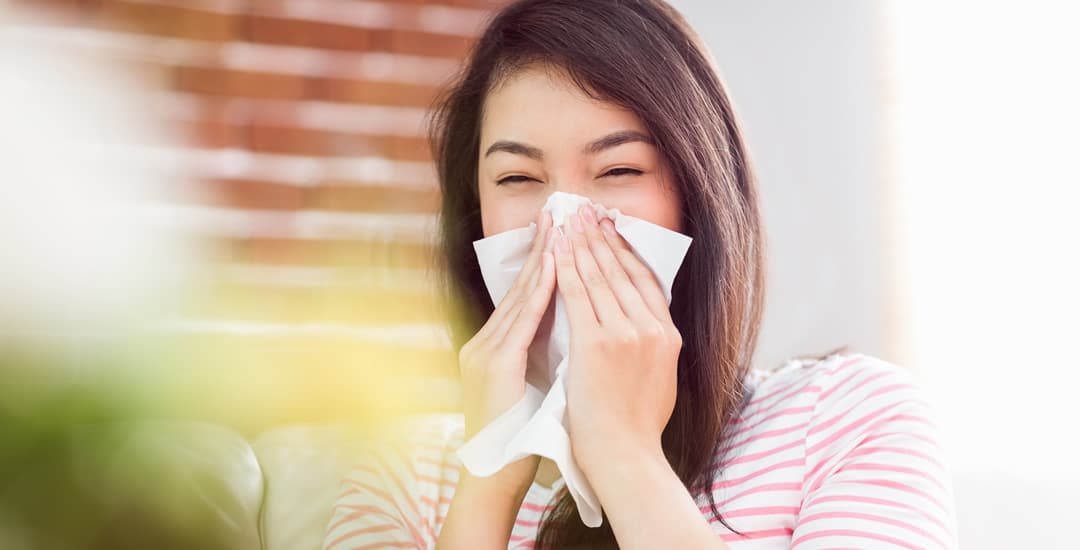
Airborne allergens are flipping numerous; pets and pollens are the tip of a literal iceberg of pinkeye and snot. There are also fungal allergens, chemical allergens, and many more, and even under the heading of “pollens” there are literally hundreds/thousands of potential permutations, and you may be allergic to more than one of them too.
Pet allergies can be really tricky as well; I know a some people who are allergic to some cats and not others. Naturally the “some” are the overly affectionate ones, and the “others” that aren’t going to cause you a health problem upon sight are absolutely going to pie you off faster than a Love Island contestant at a post-challenge recoupling.
You can apparently be allergic to quite literally anything; apart from I guess water. And air. Pure air, that is. The fact then that airborne allergies are uh, borne by air means that even if you do everything in your power to reduce your exposure, you may never be fully effective at doing so.
A lot of people don’t even know exactly what they’re allergic to, in terms of the pollen of a specific plant(s) or something else.
However, whatever it is that you’re allergic to and even if you’re not entirely sure, if you are at least confident that your allergy is to something environmental or airborne, window blinds can often help to reduce the impact of your allergies, if you choose the right type and use them in the right way!
This blog post will tell you how window blinds can reduce allergies to airborne triggers, with some tips on how to hang, use, and take care of your blinds in such a way as to reduce the presence of potential allergens within the home.
How to clean your blinds to reduce allergies
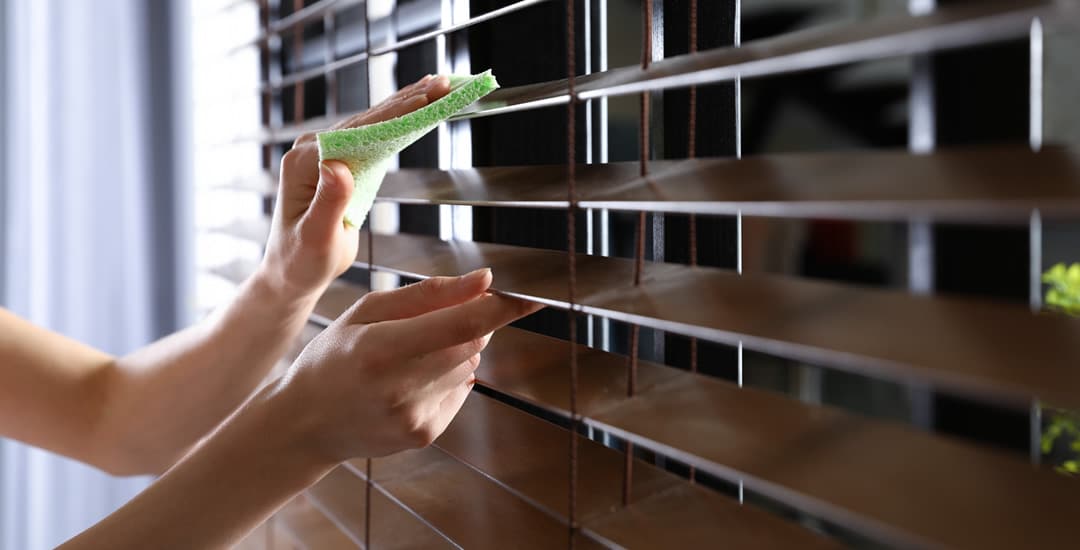
Dry-dusting a blind is apt to shake the dust up and allow the allergens present in it to return to their intended role in life of ruining yours, and most folk with allergies know that dusting (as in, moving dust around or evicting it from one surface to potentially rehome itself on another) is only the sort of move you make if you fancy a few days off work with a legitimate illness as an excuse.
This means that you need to remove and get rid of dirt/dust/invisible allergenic particles on your blinds, which for waterproof blinds, is best approached with a damp cloth that’s rinsed regularly, or with anti-allergenic wipes.
For waterproof blinds made of hard materials, I would also suggest possibly using polish (if this is safe for the blind in question) or another form of anti-static spray or agent (such as a laundry sheet, as per Mrs. Hinch’s blinds cleaning tip) which also then helps to prevent static and repel dust and invisible gremlins from the blind for a while after the event too.
If you are dealing with a non-waterproof blind that can’t be washed or wiped with anything wet/detergent-y without damage, I would seriously consider replacing your blinds, unless your allergy flare-ups are occasional and minor.
If that’s not viable or in the interim, you might want to consider using the soft brush attachment or simply concentrator nozzle of a vacuum cleaner on a low setting to try to remove as much dust and particulate matter from the blind as you can.
Be a little cautious about how you approach this and ensure that the vacuum isn’t over-powered (perhaps the one time you don’t actually want a Dyson on the case) particularly with potentially delicate fabrics such as may be used for Roman blinds. I also think that this is best avoided entirely for day and night blinds, as their sheer mesh areas are very fine and can be damaged with rough handling.
In terms of the best cleaning frequency for allergies, blinds should be incorporated into whatever your usual routine and regularity for cleaning is to keep on top of allergens within the home. This may mean wiping things off every few days (or even daily during peak allergy season) to reduce the presence of allergens to a minimum.
What blinds don’t collect dust?
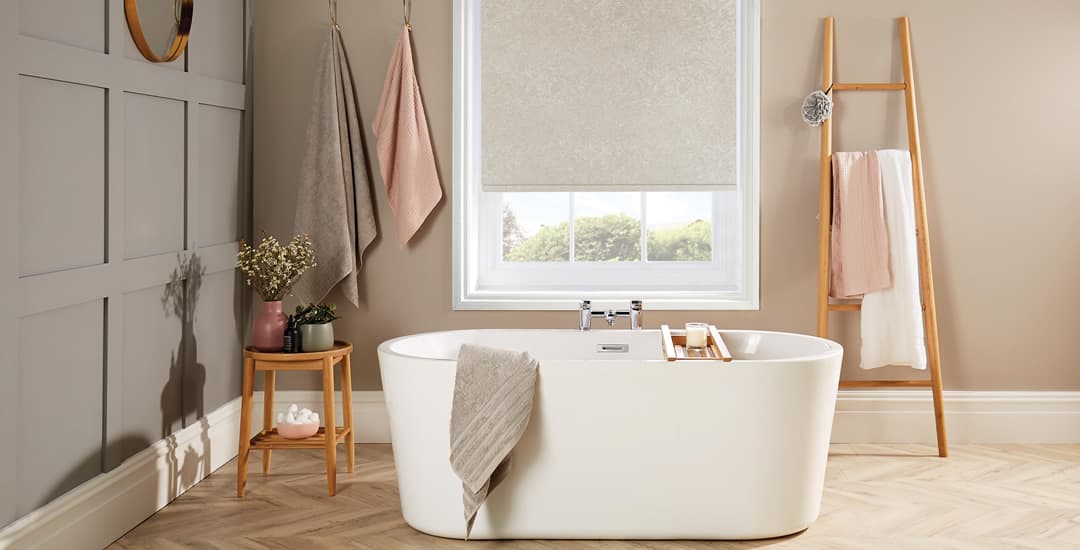
Managing allergies to airborne triggers and reducing their impact can be challenging on many levels, and reducing the amount of dust in the home is often integral to this; “dust” being a kind of collective term for stuff that floated about in the air for a while and made friends with other stuff, before making itself at home on your flat surfaces.
This means that blinds that collect the least amount of dust are the best choice for allergy sufferers; which may mean avoiding slatted blinds, which are essentially constructed of rows and rows of horizontal surfaces that can form a kind of amphitheatre for dust to gather on to witness your allergy-induced misery at its hands.
Dust gathering on slats may not be an issue if you wipe/clean them off very regularly and/or don’t leave them with the slats aligned open and the blind closed very often; but blinds like Venetian, wood, and faux-wood blind slats all tend to provide more surfaces for dust to sit on than blinds made of a sheer, single sheet of fabric, or vertical blinds.
Do dust mites live in blinds?

Dust mites can live in any kind of soft furnishings or fabrics, like your duvet, mattress, sofa, pillows, cushions, and even clothes.
But do dust mites live in blinds? They can live in fabric blinds made of non-waterproof fabrics, yes. This means non-waterproof roller blinds, non-waterproof vertical blinds, Roman blinds, and day and night blinds respectively can all harbour dust mites. However, dust mites cannot live in waterproof fabric blinds, nor blinds made of hard materials like wood or aluminium.
Does how you hang and use your blinds affect their appeal to allergens?
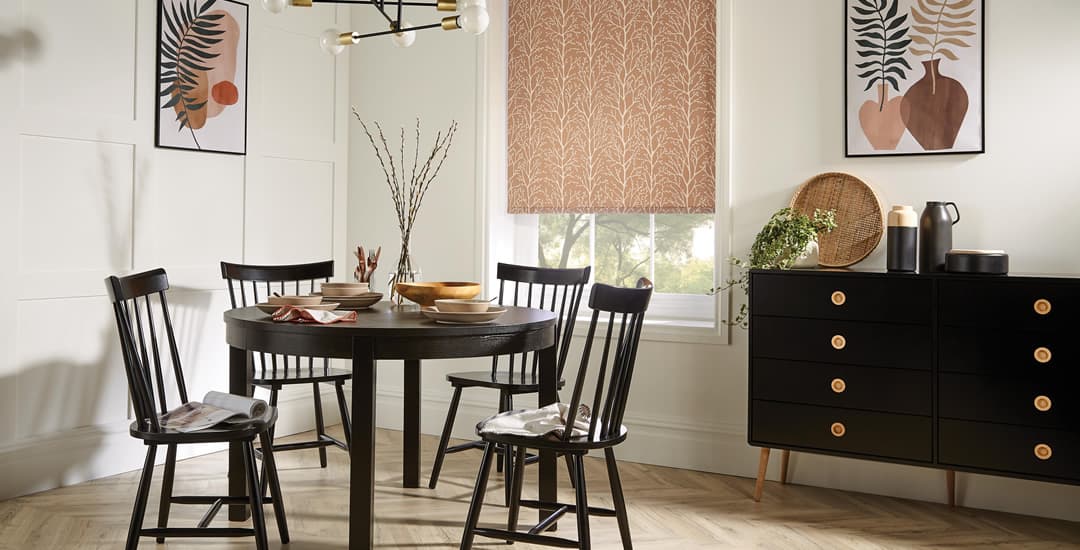
Does how you hang your blinds affect how strongly they’ll go in to bat for you against allergens?
Looking at this logically, it is possible, but it depends on a lot of factors unique to you, your blinds, and your allergy. These same factors might even mean that some blinds are better for certain allergy sufferers than others.
When I say “how you hang your blinds,” I am referring to whether they’re hung inside of the window recess (close to the window) or over it. In terms of how you use your blinds, I mean whether you tend to have them open or closed, and for adjustable blinds, how/if you tilt or angle their slats or louvres.
How come? Basically, where you hang your blind (inside of or over the window recess) plus it’s open/closed/tilted status dictates to a degree what makes it through the window and/or blind from outside into the room itself. Usually we think of this in terms of light and prying eyes, rather than invisible airborne allergenic particles.
Now, if you suffer from airborne allergies to Stuff From Outside (like pollen) then there’s a good chance you don’t spend a lot of hayfever season with open windows. This has to be a particular bummer if your home is quite stuffy or prone to overheating, as you then have to make the Hobson’s choice between potential heatstroke, or potentially losing the ability to use your respiratory system unimpeded.
However, if you do open your windows, if they have vents in them, or if they’re not hugely well insulated, then windows do let airborne allergens in potentially quite freely.
This is true for any window to an extent, even a well-fitted/insulated closed one; no window can keep air out entirely, and if you think about it, this would be kind of a terminal feature for them to have if they could.
This means that your blind can potentially have a part to play in keeping some percentage of incoming allergens out; or at least, on the reverse side of the blind, trapped between blind and window. This latter is somewhat preferable to having them roaming loose within the house, as it does at least corral most of them in one place where they can be wiped off.
With that in mind, what’s the best configuration of fitting position, usage, and blinds type to keep airborne allergens out as best you can?
How to use blinds to reduce allergies to airborne triggers
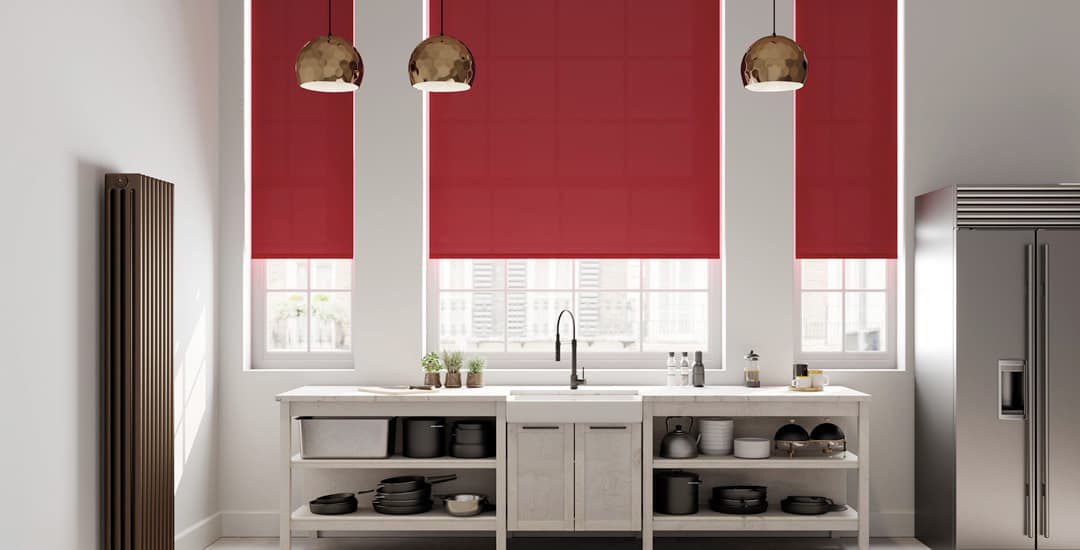
To use blinds to reduce the impact of airborne allergens like pollen, you should:
- Hang the blind inside of the window recess, as close to the glass as possible.
- Keep the blind fully closed.
- Use a waterproof blind, which can be wiped clean and that will not become permeated with allergenic particles.
- Choose a blind that does not have a lot of slats/horizontal surfaces to collect dust on them.
- Wipe or clean the blind regularly with a damp cloth, disposing of the cloth or laundering it thoroughly to remove potential allergens entirely when you’re done.
Now, this is what I consider best practice on how to use blinds to reduce allergies caused by airborne triggers; but please do bear in mind the fact that the blind’s hanging position and open/closed status is not going to help to keep allergens out if the call is coming from inside the house.
By which I mean, my first couple of bullet points are concerned with helping to keep airborne allergens from entering the room via the window, but will be wholly moot if the source of your allergies are indoors. This might come in the form of a pet, or say, a bunch of flowers that a well-meaning friend who is not the sharpest knife in the drawer brought you to cheer you up when hayfever was ruining your life (as actually happened to me).
If you’re looking for some additional guidance or direction on reducing allergies and the part your window coverings play in this, I have ranked the best and worst blinds for allergies in this blog post, and done a comparison of whether curtains or blinds are best for allergies here.




